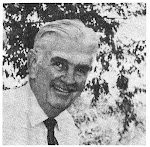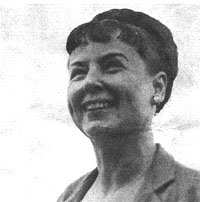One of the secrets to Holling’s enduring interest by young people is his simplified vocabulary. Dr. Seuss—Theodor Geisel—also realized this with his severely truncated lexicon in stories like The Cat in the Hat.
Holling’s Paddle-to-the-Sea has a Fog Index of 6.9, meaning 91% of everyday words we use are more difficult to read. His Flesch Reading Index score is 75.2, meaning 90% of other vocabulary is harder. Similarly, only 5% of Holling’s words are “complex. His word choices have just 1.4 syllables per word. And, there are just 12.3 words per sentence.
This doesn’t mean Holling wrote down to youngsters or was patronizing. It does mean a fifth grader can easily pick up a Holling book and understand the story. Home schooling sources regularly cite Holling’s books for their educational value. But, to a nine-year-old, Holling is a captivating guide to new worlds.
(A note of thanks for to E.J. Hirsch, Jr. for What Your Fifth Grader Needs to Know: Fundamentals of a Good Fifth Grade Education, from which these statistics are cited.)
Monday, June 21, 2010
Wednesday, June 9, 2010
Putting Archival Pieces Together
The museum in Leslie has received numerous personal items from Holling family members that broaden our insights into Holling, the naturalist and artist.
Paddle-to-the-Sea, for example, was dedicated to a boy named John Chapman. Holling at one time canoed with young Chapman’s father from Chicago to the Upper Peninsula of Lake Michigan. They took with them just three modern implements: an ax, a knife and a cooking pot, Joan Hoffman wrote in her October 2008 newsletter. In 1920, Holling painted a picture in oil of those items plus his hat, moccasins, and rolled-up hat. The painting, now more than four-score years old, has been mounted in an acid-free mat and a better frame with UV glass.
Holling’s other art found multiple uses. A humorous watercolor of a monkey on a carousel horse was annotated, “Design for a child’s magazine.” Holling, she writes, painted 18 cover designs from March 1928 to August 1929 for Junior Home Magazine. Each issue of the magazine had a Holling story in prose or verse that expanded on the cover. Suspecting the watercolor was destined for this publication, Ms. Hoffman has found four copies on eBay. Platt and Munk, the publishers, bought the plates and stories. Some of these paintings, along with re-edited stories, showed up several years later in Children of Other Lands.
Was Holling’s verse as literary as his art was esthetic? Perhaps not, but it still could be appealing to a 10-year-old child. The poem below illustrated the Junior Home Magazine cover with the red bridge.
Fishing Club for Members Only
[The first, fifth and sixth quatrains]
Down past the orchard, and beyond the lumber mill,
Where Simpson’s Creek slips through the fence, and spreads out with a swish,
Down where the cow path turns below the old red bridge,
We’ve organized a fishing club for boys who like to fish.
But now some girls would like to join! Why, girls can’t bait a hook!
They call our finest fishing poles “just ordinary sticks.”
They hate to look at angle worms: they squeal, and scare the fish away;
And then they bring their cats, and cats and dogs don’t mix.
You see our club is limited, positively limited,
Because the fish are limited; there aren’t but twenty-two,
And what with cats, and little girls that want to join and don’t like dogs—
I wish I weren’t President—I don’t know what to do!
Paddle-to-the-Sea, for example, was dedicated to a boy named John Chapman. Holling at one time canoed with young Chapman’s father from Chicago to the Upper Peninsula of Lake Michigan. They took with them just three modern implements: an ax, a knife and a cooking pot, Joan Hoffman wrote in her October 2008 newsletter. In 1920, Holling painted a picture in oil of those items plus his hat, moccasins, and rolled-up hat. The painting, now more than four-score years old, has been mounted in an acid-free mat and a better frame with UV glass.
Holling’s other art found multiple uses. A humorous watercolor of a monkey on a carousel horse was annotated, “Design for a child’s magazine.” Holling, she writes, painted 18 cover designs from March 1928 to August 1929 for Junior Home Magazine. Each issue of the magazine had a Holling story in prose or verse that expanded on the cover. Suspecting the watercolor was destined for this publication, Ms. Hoffman has found four copies on eBay. Platt and Munk, the publishers, bought the plates and stories. Some of these paintings, along with re-edited stories, showed up several years later in Children of Other Lands.
Was Holling’s verse as literary as his art was esthetic? Perhaps not, but it still could be appealing to a 10-year-old child. The poem below illustrated the Junior Home Magazine cover with the red bridge.
Fishing Club for Members Only
[The first, fifth and sixth quatrains]
Down past the orchard, and beyond the lumber mill,
Where Simpson’s Creek slips through the fence, and spreads out with a swish,
Down where the cow path turns below the old red bridge,
We’ve organized a fishing club for boys who like to fish.
But now some girls would like to join! Why, girls can’t bait a hook!
They call our finest fishing poles “just ordinary sticks.”
They hate to look at angle worms: they squeal, and scare the fish away;
And then they bring their cats, and cats and dogs don’t mix.
You see our club is limited, positively limited,
Because the fish are limited; there aren’t but twenty-two,
And what with cats, and little girls that want to join and don’t like dogs—
I wish I weren’t President—I don’t know what to do!
Subscribe to:
Posts (Atom)








